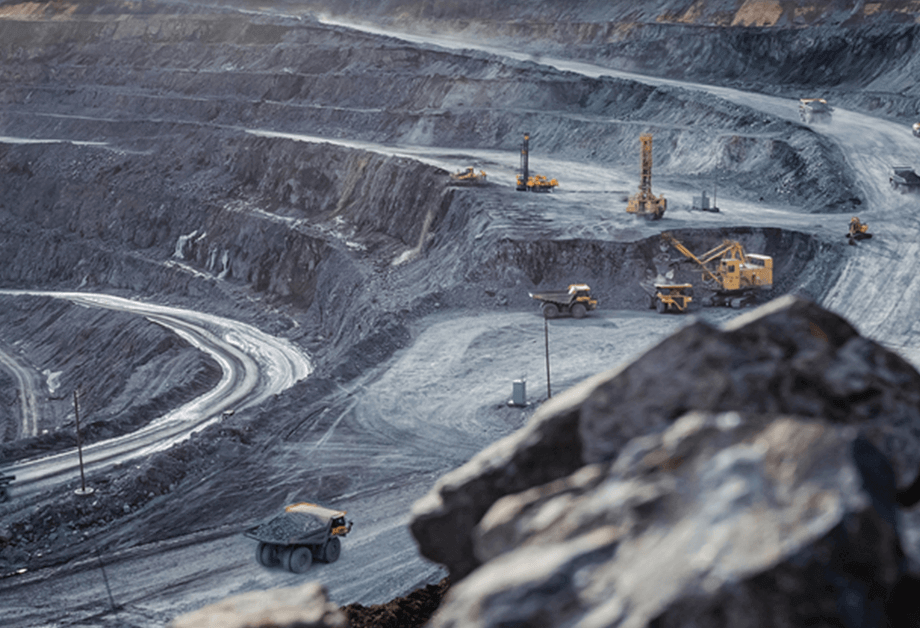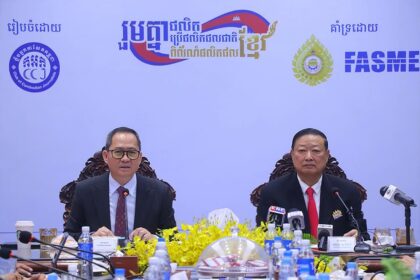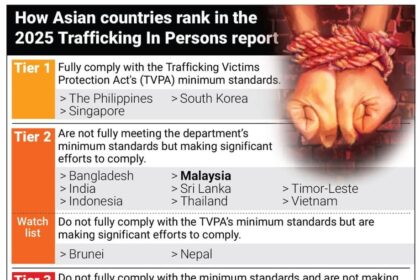China’s Rare Earth Export Controls: A New Era of Global Supply Chain Disruption
In April 2025, China imposed sweeping export controls on seven rare earth elements and related products, including high-performance magnets. These measures, introduced in response to escalating trade tensions and punitive tariffs from the United States, have sent shockwaves through global supply chains. The world’s heavy reliance on China for these critical minerals—essential for electric vehicles, renewable energy, advanced electronics, and defense systems—has been laid bare, with industries from automotive to aerospace scrambling to adapt to sudden shortages and bureaucratic bottlenecks.
- China’s Rare Earth Export Controls: A New Era of Global Supply Chain Disruption
- How China’s Export Controls Unfolded
- Why Rare Earths Matter: The Backbone of Modern Technology
- Administrative Chaos: Red Tape and Internal Politics
- Global Impact: Auto Industry and Beyond
- Economic and Geopolitical Ramifications
- Europe, India, and the Search for Alternatives
- The U.S. Dilemma: Rebuilding Domestic Capacity
- Australia and the Race for New Suppliers
- What Comes Next? The Long Road to Diversification
- In Summary
Rare earth elements (REEs) are a group of 17 chemically similar metals with unique magnetic, optical, and catalytic properties. Despite their name, they are relatively abundant in the Earth’s crust, but extracting and refining them into usable forms is complex, costly, and environmentally challenging. China’s dominance in both mining and processing—controlling about 60% of global production and nearly 90% of refining—has made it the linchpin of the world’s rare earth supply chain.
How China’s Export Controls Unfolded
China’s new export regime, which added seven rare earths and associated products to its dual-use export license system, was intended as a strategic response to U.S. tariffs and as a demonstration of Beijing’s leverage in the ongoing trade dispute. However, the rollout has been fraught with unexpected complications. Chinese officials have struggled to process a surge of export license applications, leading to confusion over export codes, difficulties in verifying the composition of shipments, and bureaucratic delays at customs.
According to industry sources, the Chinese bureaucracy was unprepared for the complexity of enforcing these controls. Nabeel Mancheri, founder of the Global Rare Earth Industry Association, noted:
“It surprised the bureaucracy in Beijing. They didn’t think it could be so much work. What I hear from the Chinese side is that it was even a shock for themselves.”
Data from Chinese customs shows that shipments of rare earth magnets in May 2025 fell by more than 50% compared to April, marking the steepest month-on-month decline since 2012. Exports to major customers plummeted: down 55% to Germany, 77% to the U.S., 81% to South Korea, and 57% to Japan. The result has been immediate and severe: automakers in the U.S., Japan, India, and Europe have halted or reduced production, and supply chain managers are warning of further disruptions as inventories dwindle.
Why Rare Earths Matter: The Backbone of Modern Technology
Rare earths are indispensable to a wide array of advanced technologies. High-performance magnets made from neodymium, dysprosium, and terbium are used in electric vehicle motors, wind turbines, fighter jets, and even the tiny motors that power car seats and windshield wipers. A single F-35 fighter jet contains nearly 900 pounds of rare earths, while a Virginia-class submarine uses over 9,000 pounds. The transition to clean energy and the proliferation of electric vehicles have only increased global demand for these materials.
China’s dominance is not just in mining but, crucially, in processing and refining. The country’s state-backed industry has invested heavily in refining capacity, research, and education, giving it a formidable cost and technological advantage. As Jost Wübbeke, managing partner at Sinolytics, explained:
“The whole world economy relies on these magnets from China. If you stop exporting those, it will be felt across the globe.”
For decades, Western countries allowed their rare earth industries to migrate to China, attracted by lower costs and fewer environmental regulations. The United States, for example, now produces almost none of its own rare earth magnets, relying instead on imports from China and, to a lesser extent, Japan and Vietnam.
Administrative Chaos: Red Tape and Internal Politics
The implementation of China’s export controls has been hampered by administrative confusion and internal government disagreements. The dual-use export system requires exporters to provide detailed information about downstream customers and product end-uses, complicating trade negotiations and raising concerns about intellectual property. The same international product code (HS code) is used for all permanent rare earth magnets, regardless of whether they contain controlled elements, leading to confusion at Chinese ports and the need for time-consuming testing.
David Merriman of Project Blue noted that the number of tests required by exporters has exceeded the capacity of Chinese official channels, further slowing the process. Some shipments have been held up due to trace impurities of listed rare earths, even in products not deliberately alloyed with them. Internal politics have also played a role, with different government agencies at odds over how strictly to enforce the measures. The security apparatus, in particular, has been reluctant to grant export licenses to foreign companies, seeking to retain bargaining power in trade negotiations with the U.S.
Despite pledges from China’s Ministry of Commerce to streamline the approval process, only about a quarter of export license applications have been approved, and procedures remain opaque and inconsistent across provinces. Some licenses have been denied on procedural grounds, while others require disclosure of sensitive information.
Global Impact: Auto Industry and Beyond
The most immediate and visible impact of China’s export controls has been on the global automotive industry. European auto supplier plants and production lines have already been shut down, with further outages expected as inventories run out. Ford was forced to halt production of its Explorer SUV at its Chicago plant for a week in May, and Japanese automaker Suzuki suspended production of its Swift car. Even as some licenses have been granted, the slow pace of customs clearance and ongoing uncertainty have left manufacturers in a precarious position.
Benjamin Krieger, Secretary General of the European Association of Automotive Suppliers (CLEPA), warned:
“With a deeply intertwined global supply chain, China’s export restrictions are already shutting down production in Europe’s supplier sector.”
Germany’s car industry, represented by the VDA, has also sounded the alarm, warning that output could soon grind to a halt if the situation does not improve. Automakers are now exploring ways to reduce their reliance on rare earths, developing motors with minimal or no rare earth content, but these solutions are not yet scalable or cost-effective.
The disruption extends beyond the automotive sector. Aerospace manufacturers, semiconductor companies, and military contractors are all affected. The U.S. defense industry, in particular, is vulnerable, as rare earths are critical for advanced weaponry and communications systems. A survey by the American Chamber of Commerce in China found that 75% of U.S. firms expect their rare earth stocks to be exhausted within three months.
Economic and Geopolitical Ramifications
The export controls have driven up prices for rare earths, with global export quantities shifting dramatically and procurement costs rising. The U.S., EU, and India face manufacturing challenges due to shortages, leading to economic difficulties across industries reliant on REEs. The situation has prompted urgent diplomatic efforts, with the U.S. and China engaging in talks to resolve trade differences and the EU seeking to expedite license approvals for its firms.
China’s actions are widely seen as a strategic move to maintain leverage in trade negotiations. Arthur Kroeber, founding partner of Gavekal Dragonomics, observed:
“It’s quite likely that they will restart exports to commercial users, but not in amounts that would permit stockpiling.”
For now, China’s export licensing regime appears to be a permanent fixture, not merely a temporary response to tariffs. Gabriel Wildau, managing director at Teneo, warned that supply cutoffs will remain an ever-present threat, signaling China’s intent to maintain leverage over Washington and other global powers.
Europe, India, and the Search for Alternatives
The European Union is acutely aware of its vulnerability, relying on China for 98% of its rare earth magnets. The European Commission aims to produce 7,000 tons of EU-based magnets by 2030, with new mining, refining, and recycling projects underway in Estonia and France. However, experts caution that a complete decoupling from China is unthinkable in the short term, and alternative sources will take years to develop.
India, despite having the world’s fifth-largest rare earth reserves, lacks the refining capacity to process them for high-tech applications and remains dependent on Chinese exports. Efforts to diversify supply through partnerships with the U.S., Australia, and Central Asian nations are ongoing but have yet to yield significant results.
G7 leaders have recognized the threat to economic and national security posed by rare earth shortages, vowing a joint response to deliberate market disruptions and moves to diversify production and supply. However, the scale and integration of China’s mine-to-magnet supply chain make it a formidable competitor.
The U.S. Dilemma: Rebuilding Domestic Capacity
The United States is now reckoning with the consequences of allowing its rare earth industry to migrate to China. Two decades ago, American factories that produced rare earth magnets moved overseas, and efforts to restart domestic production have been hampered by high costs, environmental concerns, and a lack of technical expertise. The only U.S. rare earth mine, Mountain Pass in California, has struggled to compete with China’s low-cost processing and has only recently begun to separate rare earths on-site.
New startups, such as Phoenix Tailings in Massachusetts, are attempting to produce rare earth metals domestically, but their output is minuscule compared to Chinese factories. Scaling up production will require significant investment, government support, and time—resources that are in short supply as shortages bite.
As Michael Dunne, an automotive consultant, put it:
“China could bring America’s automotive assembly plants to a standstill.”
Australia and the Race for New Suppliers
Amid the turmoil, Australia has emerged as a potential alternative supplier. With rich deposits and growing government support, Australia is investing in new mining and processing facilities. Lynas Rare Earths, the largest producer outside China, operates the Mt Weld mine in Western Australia and refines rare earths in Malaysia. Other companies, such as Iluka Resources and Arafura Rare Earths, are building new processing plants, with government loans supporting the expansion.
However, Australia faces its own challenges. Most processing still occurs overseas, and environmental concerns have delayed the development of domestic refining capacity. Building a fully integrated supply chain will take years, and for now, China’s cost advantage remains difficult to match.
Recycling rare earths is another avenue being explored, particularly in the EU, which aims to meet up to 50% of demand through recycled materials by 2050. Yet, current infrastructure is inadequate, and legal and financial barriers remain.
What Comes Next? The Long Road to Diversification
While China’s share of global rare earth extraction has decreased from 80% to 60% over the past decade, thanks to new projects in Australia, the U.S., and Canada, the country remains the dominant force in the market. Building alternative supply chains will require extensive infrastructure development, international partnerships, and government support—a process expected to take at least a decade.
In the meantime, industries are stockpiling materials, investing in research to reduce rare earth usage, and lobbying governments for support. The current crisis has underscored the strategic importance of rare earths and the risks of overreliance on a single supplier.
In Summary
- China’s export controls on rare earths have caused severe global supply chain disruptions, particularly in the automotive, electronics, and defense sectors.
- Bureaucratic delays, administrative confusion, and internal politics have compounded the impact, with only a fraction of export license applications approved.
- Automakers in the U.S., Europe, and Japan have halted or reduced production, and industries are warning of further shortages as inventories run out.
- The crisis has exposed the world’s dependence on China for critical minerals and highlighted the challenges of building alternative supply chains.
- Efforts are underway in the U.S., EU, Australia, and India to diversify supply, invest in new mining and processing facilities, and develop recycling capabilities, but these solutions will take years to materialize.
- China’s export controls are likely to remain a powerful tool in trade negotiations, and supply cutoffs will continue to pose a threat to global industries.
- The race is on to secure alternative sources and reduce vulnerability, but for now, China remains the world’s rare earth superpower.












